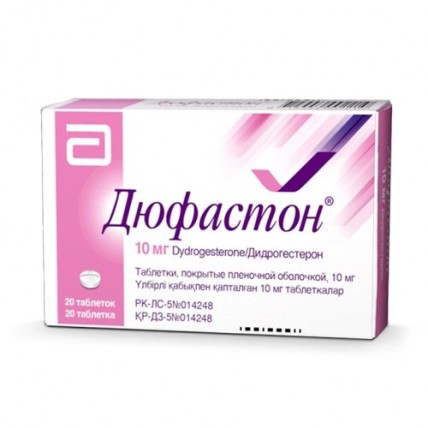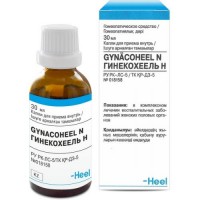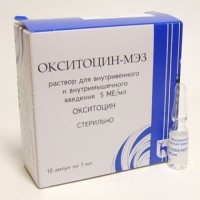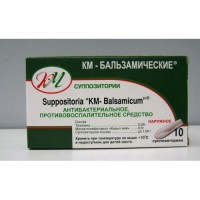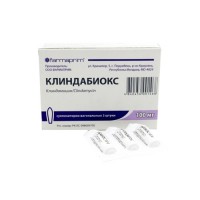Duphaston® (Dydrogesterone) 10 mg, 20 tablets
- $49.00
One tablet contains
- violation of the menstrual cycle
- endometriosis
- dysmenorrhea
- infertility due to luteal insufficiency
- support of the luteal phase when using assisted reproductive technologies (ART)
- threatened miscarriage due to progesterone deficiency
- habitual miscarriage due to progesterone deficiency
- premenstrual syndrome
In estrogen therapy in women with an intact uterus, it can be used in a cyclic mode under the following conditions:
- to prevent endometrial hyperplasia in the postmenopausal period
- dysfunctional uterine bleeding
- secondary amenorrhea
- contraindications for estrogens should be considered when they are used in combination with progestogens such as dydrogesterone
- luteal phase support treatment with assisted reproductive technology (ART) should be discontinued if an abortion/miscarriage is diagnosed
- vaginal bleeding of unknown etiology
- serious violations of liver function at the moment or in history before the normalization of liver tests
- hypersensitivity to dydrogesterone or other components of the drug
- diagnosed or suspected progestogen- or estrogen-dependent malignant neoplasms (for example, meningioma).
- persons with hereditary galactose intolerance, Lapp-lactase deficiency, glucose-galactose malabsorption
Before you start taking Duphaston for the treatment of uterine bleeding, it is necessary to exclude the organic cause of its occurrence.
Occasionally, breakthrough bleeding may occur during the first months of treatment. If breakthrough bleeding or spotting occurs after a certain period of taking the drug or continues after a course of treatment, their cause should be established, an endometrial biopsy should be taken to exclude malignant changes in the endometrium.
Conditions requiring discontinuation of treatment
If one of the following conditions occurs in the first days of treatment or if their severity increases, consideration should be given to discontinuing therapy:
- exceptionally severe headache, migraine or symptoms suggestive of cerebral ischemia
- a significant increase in blood pressure
- Signs of venous thromboembolism.
In case of threatened abortion or recurrent miscarriage, the progression of pregnancy and the viability of the embryo or fetus should be monitored.
Conditions requiring close monitoring
It is known that some rare conditions may be dependent on sex hormones and may occur or worsen during pregnancy and the use of drugs containing sex hormones. Among them: cholestatic jaundice, herpes of pregnancy, severe itching, otosclerosis and porphyria.
Patients with a history of depression need careful monitoring. If signs of depression occur, Duphaston should be discontinued.
Other states
This medicine contains lactose monohydrate. Patients with rare hereditary problems of galactose intolerance, lactase deficiency (Lapp) or glucose-galactose malabsorption syndrome should not take Duphaston®.
In the case of the appointment of Duphaston in combination with estrogens (for example, for HRT), you should carefully read the contraindications and warnings associated with the use of estrogens.
Special instructions when using Duphaston to prevent endometrial hyperplasia in the postmenopausal period
Consideration should be given to the safety information for a drug containing estrogen.
For the treatment of menopausal symptoms as a hormone replacement therapy (HRT), Duphaston® is used only when the symptoms of menopause significantly impair a woman's quality of life. Periodically, at least once a year, it is necessary to assess the risks and benefits of HRT and continue treatment when the benefits outweigh the risks.
Medical examination and observation. Before starting or resuming HRT, a complete medical and family history should be taken. During treatment with Duphaston®, dynamic monitoring is recommended (the frequency and nature of studies are determined individually). Patients should be aware that they should immediately report any changes in the mammary glands to their doctor.
hyperplasia of the endometrium. The risk of hyperplasia and endometrial cancer increases with long-term estrogen use in women with an unremoved uterus.
Breakthrough bleeding may occur during the first months of treatment. If breakthrough bleeding is observed after a significant time after the start of treatment or after its termination, it is necessary to examine the woman.
Mammary cancer
Women taking combined estrogen-progestogen drugs and possibly monoestrogen drugs as HRT have an increased risk of breast cancer (BC), and this depends on the duration of treatment.
ovarian cancer
Ovarian cancer is much less common than breast cancer. Venous thromboembolism. HRT is associated with an increase in the relative risk of developing venous thromboembolism (VTE), that is, deep vein thrombosis and pulmonary thromboembolism, by 1.3-3 times. Patients with a history of VTE or diagnosed thrombophilic conditions have an increased risk of VTE, and HRT may increase this risk. Therefore, HRT is contraindicated in this group of patients.
It is necessary to take preventive measures to prevent VTE in patients in the postoperative period.
Patients with no history of VTE but who have first-degree relatives with a history of thrombosis at a young age may be offered screening for congenital clotting factor defects after a thorough routine evaluation. Patients taking anticoagulants need to carefully reassess the risk-benefit ratio of HRT.
If VTE has developed on the background of HRT, treatment should be stopped. The patient should be aware that at the first possible symptoms of VTE (painful swelling of the lower extremities, sudden chest pain, shortness of breath), she should immediately contact her doctor.
Cardiac ischemia. Women with or without coronary artery disease who took HRT drugs, combined or monoestrogen, were not protected from myocardial infarction.
Ischemic stroke. Combined and monoestrogenic HRT is accompanied by an increase in the risk of ischemic stroke up to 1.5 times.
Metabolism of dydrogesterone and DHD may be increased by concomitant use of drugs such as anticonvulsants (eg, phenobarbital, phenytoin, carbamazepine), certain tuberculostatic and antiviral drugs (eg, rifampicin, rifabutin, nevirapine, efavirenz), and herbal preparations containing extracts of St. John's wort (Hypericum). perforatum), sage or ginkgo biloba.
Ritonavir and nelfinavir exhibit enzyme inducing properties when taken concomitantly with steroids.
During pregnancy or lactation
To date, there is no indication that the use of Duphaston during pregnancy has harmful effects. Undesirable effects occurred only at exposure doses that significantly exceeded the maximum human exposure dose.
Duphaston can be used during pregnancy if clearly indicated.
Reception of Duphaston during breastfeeding is not recommended.
Features of the effect of the drug on the ability to drive a vehicle or potentially dangerous mechanisms
Duphaston has little effect on the ability to drive a car and potentially dangerous machinery.
In rare cases, Duphaston may cause drowsiness and / or dizziness, especially in the first few hours after ingestion. Therefore, care must be taken when driving a car or operating machinery.
Dosing regimen
Irregular menstruation - 1 tablet (10 mg) per day from the 11th to the 25th day. It is possible to achieve a regular 28-day cycle.
Endometriosis - 1-3 tablets (10-30 mg) per day from the 5th to the 25th day of the cycle or continuously. Dose more than 1 tablet per day divided into several doses throughout the day. Treatment should begin with the highest dose.
Dysmenorrhea - 1-2 tablets (10-20 mg) per day from the 5th to the 25th day of the cycle. Dose more than 1 tablet per day divided into several doses throughout the day. Treatment should begin with the highest dose. Continue treatment for 6 months continuously.
Infertility due to luteal insufficiency - 1 tablet (10 mg) per day from the 14th to the 25th day of the cycle. Continue treatment continuously for at least 6 consecutive cycles. When pregnancy occurs, treatment is recommended to be continued during the first months according to the scheme recommended for habitual abortion.
Support of the luteal phase in the application of assisted reproductive technologies (ART)
1 tablet of Duphaston 3 times a day (30 mg per day). Treatment begins on the day of oocyte retrieval and continues for 10 weeks in case of confirmed pregnancy.
Threatened miscarriage due to lack of progesterone - initial dose: 4 tablets (40 mg) once, then 1 tablet (10 mg) every 8 hours until symptoms disappear. Treatment should begin with the highest dose. If symptoms persist or recur during treatment, the dose should be increased by 1 tablet (10 mg) every 8 hours. Continue treatment at an effective dose for 1 week after symptoms disappear; then gradually decrease. With a subsequent recurrence of symptoms, continue treatment with the effective dose reached earlier.
Habitual miscarriage due to progesterone deficiency - 1 tablet (10 mg) per day until the 20th week of pregnancy; then the dose can be gradually reduced. Treatment should begin before conception. If symptoms of threatened abortion occur, continue treatment as indicated.
Dysfunctional uterine bleeding
To stop bleeding - 1 tablet (10 mg) 2 times a day for 5-7 days in combination with estrogen. Blood loss is significantly reduced within a few days. A few days after stopping treatment, heavy withdrawal bleeding is possible. The patient must be warned about this.
Subsequent heavy bleeding can be prevented by prophylactic administration of 1 tablet (10 mg) per day from the 11th to the 25th day of the cycle, if necessary in combination with estrogens, for 2-3 cycles. After this, treatment can be stopped to make sure that the regularity of the cycles is restored.
Secondary amenorrhea - 1-2 tablets (10-20 mg) per day from the 11th to the 25th day of the cycle to achieve the secretory transformation of the endometrium as a result of adequate stimulation with endogenous or exogenous estrogens.
To prevent endometrial hyperplasia in the postmenopausal period - in combination with continuous estrogen intake - 1-2 tablets (10-20 mg) per day for 14 consecutive days within a 28-day cycle. If you need to take 2 tablets per day, the dose is divided into two doses. When taking dydrogesterone, withdrawal bleeding is possible.
Combination therapy with estrogens and progestogens should be carried out using the lowest effective dose of hormones and for the shortest possible course commensurate with the goals of treatment and risks for each woman, with regular reassessment of risks and benefits.
Premenstrual syndrome - 1 tablet (10 mg) 2 times a day from the 11th to the 25th day of the cycle.
For oral administration
Symptoms: Duphaston® is well tolerated when taken orally (the maximum daily dose taken by a person is 360 mg).
Treatment: There is no specific antidote, treatment should be symptomatic. This information also applies to overdose in children.
Description of adverse reactions that occur with the standard use of drugs and measures to be taken in this case (if necessary)
Often
- vaginal bleeding
Often
- nausea, vomiting, abdominal pain
- migraine/headache
- menstrual disorders (including metrorrhagia, menorrhagia, oligo/amenorrhea, dysmenorrhea and irregular menstruation), breast tenderness/sensitivity
Infrequently
- depression
- dizziness
- impaired liver function (which may be accompanied by jaundice, asthenia or malaise, abdominal pain)
- allergic dermatitis (eg rash, itching, urticaria)
- increase in body weight
Rarely
- an increase in the size of progestogen-dependent neoplasms, (for example, meningioma) *
- hemolytic anemia*
- hypersensitivity
- drowsiness
- angioedema *.
- swelling of the mammary glands
- edema
Shelf life - 5 years
Do not use after the expiration date!
Store at a temperature not exceeding 30 0C.
Keep out of the reach of children!
- Active ingredient: micronized dydrogesterone 10 mg
- Excipients: lactose monohydrate, hypromellose (HPMC 2910), corn starch, anhydrous colloidal silicon dioxide, magnesium stearate
- Shell: Opadry Y-1-7000 white: (macrogol 400, hypromellose (HPMC 2910), titanium dioxide (E-171).
Indications for use
- violation of the menstrual cycle
- endometriosis
- dysmenorrhea
- infertility due to luteal insufficiency
- support of the luteal phase when using assisted reproductive technologies (ART)
- threatened miscarriage due to progesterone deficiency
- habitual miscarriage due to progesterone deficiency
- premenstrual syndrome
In estrogen therapy in women with an intact uterus, it can be used in a cyclic mode under the following conditions:
- to prevent endometrial hyperplasia in the postmenopausal period
- dysfunctional uterine bleeding
- secondary amenorrhea
List of information required before use
Contraindications
- contraindications for estrogens should be considered when they are used in combination with progestogens such as dydrogesterone
- luteal phase support treatment with assisted reproductive technology (ART) should be discontinued if an abortion/miscarriage is diagnosed
- vaginal bleeding of unknown etiology
- serious violations of liver function at the moment or in history before the normalization of liver tests
- hypersensitivity to dydrogesterone or other components of the drug
- diagnosed or suspected progestogen- or estrogen-dependent malignant neoplasms (for example, meningioma).
- persons with hereditary galactose intolerance, Lapp-lactase deficiency, glucose-galactose malabsorption
Necessary precautions for use
Before you start taking Duphaston for the treatment of uterine bleeding, it is necessary to exclude the organic cause of its occurrence.
Occasionally, breakthrough bleeding may occur during the first months of treatment. If breakthrough bleeding or spotting occurs after a certain period of taking the drug or continues after a course of treatment, their cause should be established, an endometrial biopsy should be taken to exclude malignant changes in the endometrium.
Conditions requiring discontinuation of treatment
If one of the following conditions occurs in the first days of treatment or if their severity increases, consideration should be given to discontinuing therapy:
- exceptionally severe headache, migraine or symptoms suggestive of cerebral ischemia
- a significant increase in blood pressure
- Signs of venous thromboembolism.
In case of threatened abortion or recurrent miscarriage, the progression of pregnancy and the viability of the embryo or fetus should be monitored.
Conditions requiring close monitoring
It is known that some rare conditions may be dependent on sex hormones and may occur or worsen during pregnancy and the use of drugs containing sex hormones. Among them: cholestatic jaundice, herpes of pregnancy, severe itching, otosclerosis and porphyria.
Patients with a history of depression need careful monitoring. If signs of depression occur, Duphaston should be discontinued.
Other states
This medicine contains lactose monohydrate. Patients with rare hereditary problems of galactose intolerance, lactase deficiency (Lapp) or glucose-galactose malabsorption syndrome should not take Duphaston®.
In the case of the appointment of Duphaston in combination with estrogens (for example, for HRT), you should carefully read the contraindications and warnings associated with the use of estrogens.
Special instructions when using Duphaston to prevent endometrial hyperplasia in the postmenopausal period
Consideration should be given to the safety information for a drug containing estrogen.
For the treatment of menopausal symptoms as a hormone replacement therapy (HRT), Duphaston® is used only when the symptoms of menopause significantly impair a woman's quality of life. Periodically, at least once a year, it is necessary to assess the risks and benefits of HRT and continue treatment when the benefits outweigh the risks.
Medical examination and observation. Before starting or resuming HRT, a complete medical and family history should be taken. During treatment with Duphaston®, dynamic monitoring is recommended (the frequency and nature of studies are determined individually). Patients should be aware that they should immediately report any changes in the mammary glands to their doctor.
hyperplasia of the endometrium. The risk of hyperplasia and endometrial cancer increases with long-term estrogen use in women with an unremoved uterus.
Breakthrough bleeding may occur during the first months of treatment. If breakthrough bleeding is observed after a significant time after the start of treatment or after its termination, it is necessary to examine the woman.
Mammary cancer
Women taking combined estrogen-progestogen drugs and possibly monoestrogen drugs as HRT have an increased risk of breast cancer (BC), and this depends on the duration of treatment.
ovarian cancer
Ovarian cancer is much less common than breast cancer. Venous thromboembolism. HRT is associated with an increase in the relative risk of developing venous thromboembolism (VTE), that is, deep vein thrombosis and pulmonary thromboembolism, by 1.3-3 times. Patients with a history of VTE or diagnosed thrombophilic conditions have an increased risk of VTE, and HRT may increase this risk. Therefore, HRT is contraindicated in this group of patients.
It is necessary to take preventive measures to prevent VTE in patients in the postoperative period.
Patients with no history of VTE but who have first-degree relatives with a history of thrombosis at a young age may be offered screening for congenital clotting factor defects after a thorough routine evaluation. Patients taking anticoagulants need to carefully reassess the risk-benefit ratio of HRT.
If VTE has developed on the background of HRT, treatment should be stopped. The patient should be aware that at the first possible symptoms of VTE (painful swelling of the lower extremities, sudden chest pain, shortness of breath), she should immediately contact her doctor.
Cardiac ischemia. Women with or without coronary artery disease who took HRT drugs, combined or monoestrogen, were not protected from myocardial infarction.
Ischemic stroke. Combined and monoestrogenic HRT is accompanied by an increase in the risk of ischemic stroke up to 1.5 times.
Interactions with other drugs
Metabolism of dydrogesterone and DHD may be increased by concomitant use of drugs such as anticonvulsants (eg, phenobarbital, phenytoin, carbamazepine), certain tuberculostatic and antiviral drugs (eg, rifampicin, rifabutin, nevirapine, efavirenz), and herbal preparations containing extracts of St. John's wort (Hypericum). perforatum), sage or ginkgo biloba.
Ritonavir and nelfinavir exhibit enzyme inducing properties when taken concomitantly with steroids.
Special Warnings
During pregnancy or lactation
To date, there is no indication that the use of Duphaston during pregnancy has harmful effects. Undesirable effects occurred only at exposure doses that significantly exceeded the maximum human exposure dose.
Duphaston can be used during pregnancy if clearly indicated.
Reception of Duphaston during breastfeeding is not recommended.
Features of the effect of the drug on the ability to drive a vehicle or potentially dangerous mechanisms
Duphaston has little effect on the ability to drive a car and potentially dangerous machinery.
In rare cases, Duphaston may cause drowsiness and / or dizziness, especially in the first few hours after ingestion. Therefore, care must be taken when driving a car or operating machinery.
Recommendations for use
Dosing regimen
Irregular menstruation - 1 tablet (10 mg) per day from the 11th to the 25th day. It is possible to achieve a regular 28-day cycle.
Endometriosis - 1-3 tablets (10-30 mg) per day from the 5th to the 25th day of the cycle or continuously. Dose more than 1 tablet per day divided into several doses throughout the day. Treatment should begin with the highest dose.
Dysmenorrhea - 1-2 tablets (10-20 mg) per day from the 5th to the 25th day of the cycle. Dose more than 1 tablet per day divided into several doses throughout the day. Treatment should begin with the highest dose. Continue treatment for 6 months continuously.
Infertility due to luteal insufficiency - 1 tablet (10 mg) per day from the 14th to the 25th day of the cycle. Continue treatment continuously for at least 6 consecutive cycles. When pregnancy occurs, treatment is recommended to be continued during the first months according to the scheme recommended for habitual abortion.
Support of the luteal phase in the application of assisted reproductive technologies (ART)
1 tablet of Duphaston 3 times a day (30 mg per day). Treatment begins on the day of oocyte retrieval and continues for 10 weeks in case of confirmed pregnancy.
Threatened miscarriage due to lack of progesterone - initial dose: 4 tablets (40 mg) once, then 1 tablet (10 mg) every 8 hours until symptoms disappear. Treatment should begin with the highest dose. If symptoms persist or recur during treatment, the dose should be increased by 1 tablet (10 mg) every 8 hours. Continue treatment at an effective dose for 1 week after symptoms disappear; then gradually decrease. With a subsequent recurrence of symptoms, continue treatment with the effective dose reached earlier.
Habitual miscarriage due to progesterone deficiency - 1 tablet (10 mg) per day until the 20th week of pregnancy; then the dose can be gradually reduced. Treatment should begin before conception. If symptoms of threatened abortion occur, continue treatment as indicated.
Dysfunctional uterine bleeding
To stop bleeding - 1 tablet (10 mg) 2 times a day for 5-7 days in combination with estrogen. Blood loss is significantly reduced within a few days. A few days after stopping treatment, heavy withdrawal bleeding is possible. The patient must be warned about this.
Subsequent heavy bleeding can be prevented by prophylactic administration of 1 tablet (10 mg) per day from the 11th to the 25th day of the cycle, if necessary in combination with estrogens, for 2-3 cycles. After this, treatment can be stopped to make sure that the regularity of the cycles is restored.
Secondary amenorrhea - 1-2 tablets (10-20 mg) per day from the 11th to the 25th day of the cycle to achieve the secretory transformation of the endometrium as a result of adequate stimulation with endogenous or exogenous estrogens.
To prevent endometrial hyperplasia in the postmenopausal period - in combination with continuous estrogen intake - 1-2 tablets (10-20 mg) per day for 14 consecutive days within a 28-day cycle. If you need to take 2 tablets per day, the dose is divided into two doses. When taking dydrogesterone, withdrawal bleeding is possible.
Combination therapy with estrogens and progestogens should be carried out using the lowest effective dose of hormones and for the shortest possible course commensurate with the goals of treatment and risks for each woman, with regular reassessment of risks and benefits.
Premenstrual syndrome - 1 tablet (10 mg) 2 times a day from the 11th to the 25th day of the cycle.
Method and route of administration
For oral administration
Measures to be taken in case of overdose
Symptoms: Duphaston® is well tolerated when taken orally (the maximum daily dose taken by a person is 360 mg).
Treatment: There is no specific antidote, treatment should be symptomatic. This information also applies to overdose in children.
Description of adverse reactions that occur with the standard use of drugs and measures to be taken in this case (if necessary)
Often
- vaginal bleeding
Often
- nausea, vomiting, abdominal pain
- migraine/headache
- menstrual disorders (including metrorrhagia, menorrhagia, oligo/amenorrhea, dysmenorrhea and irregular menstruation), breast tenderness/sensitivity
Infrequently
- depression
- dizziness
- impaired liver function (which may be accompanied by jaundice, asthenia or malaise, abdominal pain)
- allergic dermatitis (eg rash, itching, urticaria)
- increase in body weight
Rarely
- an increase in the size of progestogen-dependent neoplasms, (for example, meningioma) *
- hemolytic anemia*
- hypersensitivity
- drowsiness
- angioedema *.
- swelling of the mammary glands
- edema
Storage conditions
Shelf life - 5 years
Do not use after the expiration date!
Store at a temperature not exceeding 30 0C.
Keep out of the reach of children!
